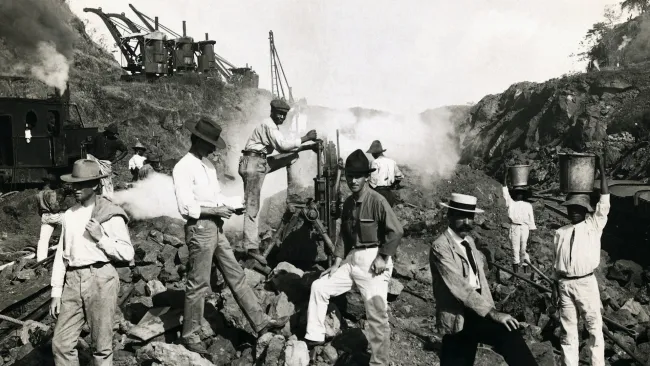Panama Canal Construction: The Untold Story of Human Sacrifice and Legacy
PANAMA – The Panama Canal, a celebrated engineering marvel that links the Atlantic and Pacific Oceans, transformed global trade. Yet, its creation came at an immense human cost, spanning decades and claiming the lives of tens of thousands of workers.
The French Chapter: A Troubled Beginning
In the 1880s, Ferdinand de Lesseps launched a French effort to build the canal, inspired by his previous success with the Suez Canal. However, this early project faced overwhelming challenges:
- Devastating Fatalities: Over 22,000 workers are estimated to have died during the French attempt. Roughly 5,000 of these were French nationals, while the remainder were mainly laborers from the Caribbean and other regions.
- Severe Hurdles: Limited medical knowledge about mosquito-borne diseases such as yellow fever and malaria compounded the difficulties. Relentless rains, landslides, and the brutal working environment further contributed to the catastrophic loss of life.
The American Phase: Overcoming Disease and Inequality
After the French project collapsed, the United States took over in 1904. Under the leadership of Colonel William Crawford Gorgas, American engineers introduced groundbreaking public health measures:
- Innovative Sanitation: Extensive programs were implemented to drain standing water, fumigate buildings, install mosquito screens, and administer prophylactic quinine to combat malaria. These measures drastically reduced the incidence of yellow fever and malaria, although they did not completely eliminate all risks.
- Unequal Impact: During the American construction phase, about 5,600 workers lost their lives. Approximately 350 were white or American workers, while nearly 4,500 were black laborers—primarily from the West Indies. This stark disparity highlights the unequal conditions and support different groups received during construction.
Lasting Impact and Remembrance
The human toll of the canal’s construction goes beyond mere statistics:
- Hazardous Work Conditions: Workers toiled in dangerous environments, operating heavy machinery amid the constant threat of tropical diseases. Frequent accidents—from dynamite explosions to train collisions—were a grim reality.
- Community and Social Effects: The massive influx of workers dramatically altered local communities. Families and entire neighborhoods were devastated by loss, and the scars of that hardship remain evident today.
- A Legacy Honored: Although the canal is lauded for its economic and strategic benefits, memorials and historical studies serve as enduring reminders of the sacrifices made. Historians emphasize that the canal’s triumph was built on the relentless struggle and profound loss experienced by its builders.
A Dual Legacy of Ingenuity and Sacrifice
The history of the Panama Canal is a testament to human ingenuity and determination in the face of daunting challenges. Yet, it also stands as a somber reminder of the heavy price paid in human lives. As modern shipping continues to benefit from this critical waterway, the memory of those who suffered and perished endures—urging current and future generations to reflect on the true cost of progress.
